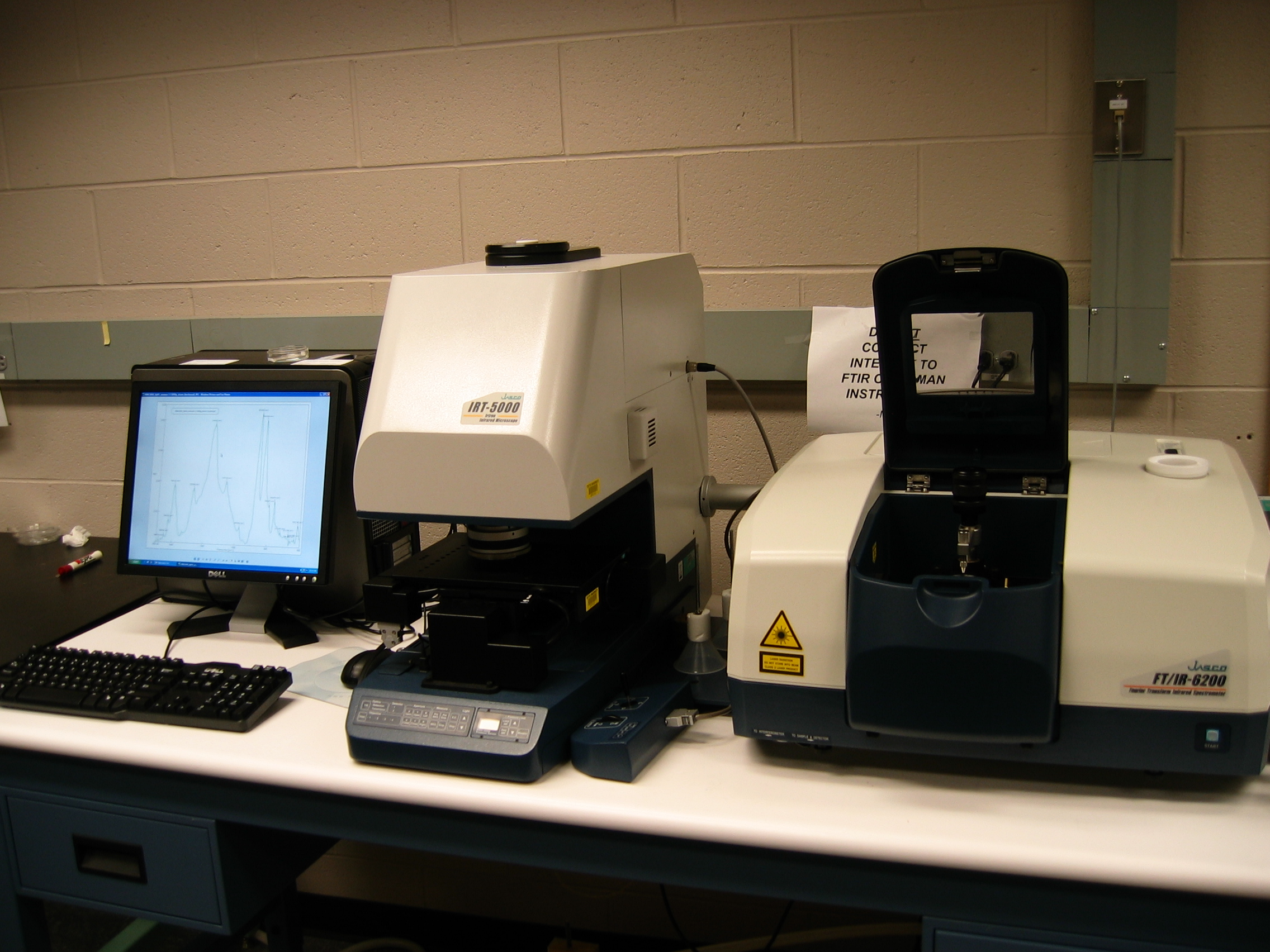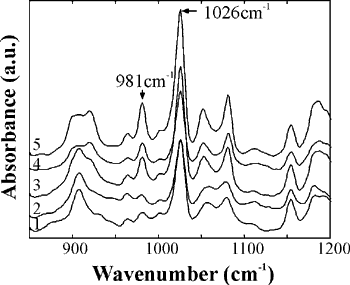The Cebe Research Group studies optical properties using wavelengths ranging from the ultraviolet to the far-infrared. A spectroscopic ellipsometer (right) uses wavelengths from the UV to the near IR to study thin and ultra-thin films and coatings. Changes in the Fresnel reflection coefficients are used to determine the refractive index and film thickness as functions of temperature and wavelength.
The Fourier Transform infrared spectrometer (below left) is used by the Cebe Research Group to measure variations in the absorbance spectra caused by different degrees of crystallinity in polymer films. In isotactic polystyrene, the ratio of two absorption bands, at 981cm-1 and 1026cm-1, is used to develop a calibration curve by which crystallinity can be determined in thin and ultra-thin films. The 981 cm-1 band is crystallinity sensitive, while the 1026cm-1 band can serve as an internal reference standard. The data (right) show absorbance spectra for films whose crystalline content increases from bottom to top. These data are used to produce a calibration plot of band ratio to crystallinity determined by independent means such as X-ray and calorimetry. |
 |
 |